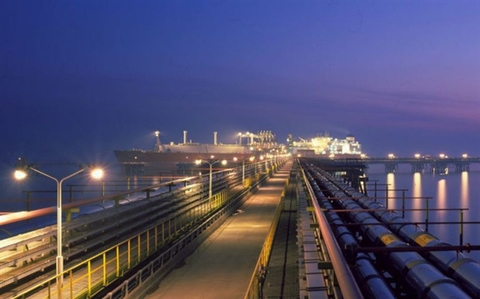
Rising power demands are pushing foreign investment into LNG projects in Viet Nam. — Photo cafef
Foreign investors are diving into developing liquefied natural gas (LNG) and gas-fired power projects in Viet Nam, in part due to country’s growing demand for electricity.
Korea Gas Corporation (KOGAS) became the latest player this week after it entered into a Memorandum of Understanding (MoU) with Energy Capital Vietnam (ECV) that provides a framework for the development of a privately funded liquefied natural gas (LNG) regasification terminal, storage, gas supply system and 3,200 MW gas-fired power project near Mui Ke Ga in the southern province of Binh Thuan.
David Lewis, CEO of ECV, said KOGAS' strong presence in the LNG business, along with ECV's position as one of the first LNG movers in Viet Nam, allows both companies to leverage each other's strengths to bring low-cost LNG to Viet Nam and help address critical energy security needs.
Interest among foreign investors in Viet Nam’s natural gas and LNG sectors continues to be high, with the likes of Tokyo Gas and Marubeni Corporation interested in forging ties with domestic entities for potential opportunities in LNG, while the US Trade and Development Agency pledged its support to help improve Viet Nam’s energy security status by providing smart, clean technology and developing the LNG power industry.
LNG consumption in Viet Nam is expected to grow at a robust average annual rate of 10 per cent over next decade, driven by Government efforts to gradually diversify away from coal in favour of cleaner alternatives, and the introduction of several LNG import projects to supplement declining domestic production.
The Government has primarily centred on renewable sources such as solar and wind, although their intermittent nature continues to raise questions about reliability, while hydropower, currently a prominent part of the national power mix, is increasingly being scrutinised for its harmful effects on the environment.
This opens up room for gas-fired power generation to assume a larger role in the national power mix, as a cleaner, less- environmentally hazardous alternative to coal and hydropower with a more reliable baseload power source compared with most renewables.
The country’s current power plan – the Power Development Plan VII, revised in 2016 – provides for the construction of 8GW of new gas-fired capacity across Kien Giang, Dong Nai, Quang Nam and Binh Thuan provinces between 2021 and 2027. The projects are likely to be retained in the forthcoming energy plan.
According to analysts from Fitch Solutions, Viet Nam’s current crop of gas-to-power projects have a good chance of coming online as planned due to a combination of supportive factors including availability of funding, rising foreign capital inflows into the domestic power, natural gas and LNG sectors and increasingly supportive Government rhetoric for reducing emissions and promoting greater gas use. — VNS